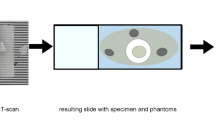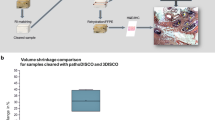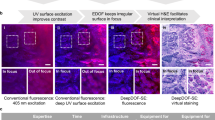Abstract
USING a method described elsewhere1, we have been able to cut serial sections of about 250 A. thickness, and, by varying the speed of cutting successive sections, serial sections of thickness alternately about 350 A. and 150 A. There were always thin and thick areas within individual sections. On the basis of the general rule suggested by Cosslett2, that the optimum resolution obtainable from a section is of the order of one-tenth of the thickness, the thinner parts of the 150 A. sections should afford resolutions of 10 A. We have succeeded in obtaining such resolutions, as illustrated in Fig. 1.
This is a preview of subscription content, access via your institution
Access options
Subscribe to this journal
Receive 51 print issues and online access
$199.00 per year
only $3.90 per issue
Buy this article
- Purchase on SpringerLink
- Instant access to full article PDF
Prices may be subject to local taxes which are calculated during checkout
Similar content being viewed by others
References
Eaves, G., Ph.D. thesis, University of Leeds (1953). Eaves, G., and Flewett, T. H., Exp. Cell Res. (in the press).
Cosslett, V. E., “Practical Electron Microscopy” (Butterworth and Co., London, 1951).
Author information
Authors and Affiliations
Rights and permissions
About this article
Cite this article
FLEWETT, T., EAVES, G. High Resolution Electron Micrographs of Thin Tissue Sections. Nature 173, 309 (1954). https://doi.org/10.1038/173309a0
Issue date:
DOI: https://doi.org/10.1038/173309a0



